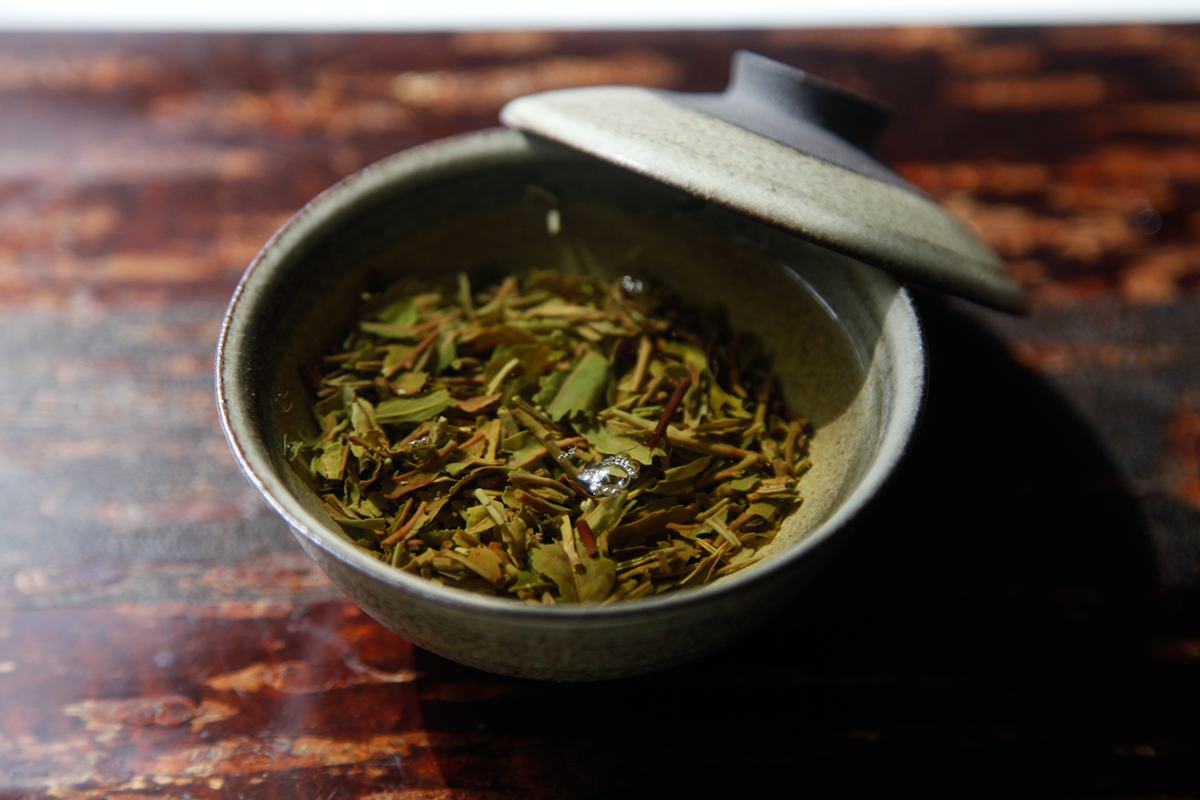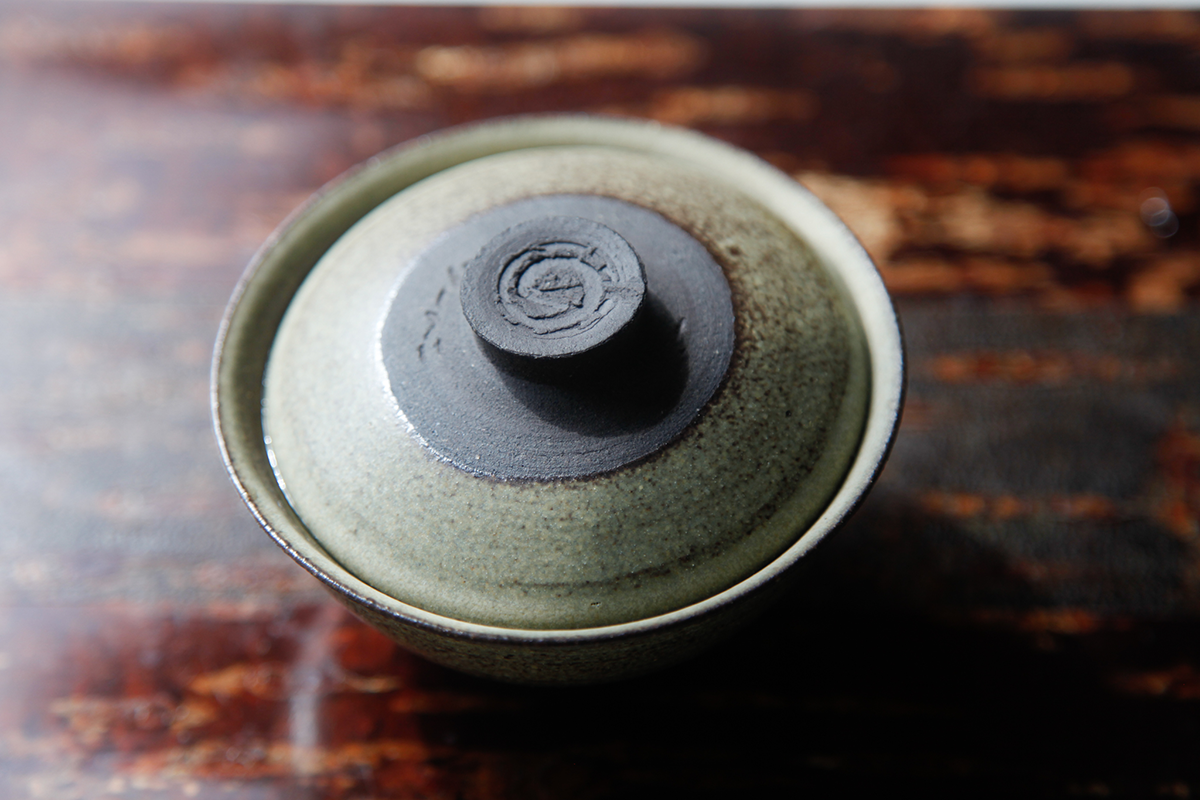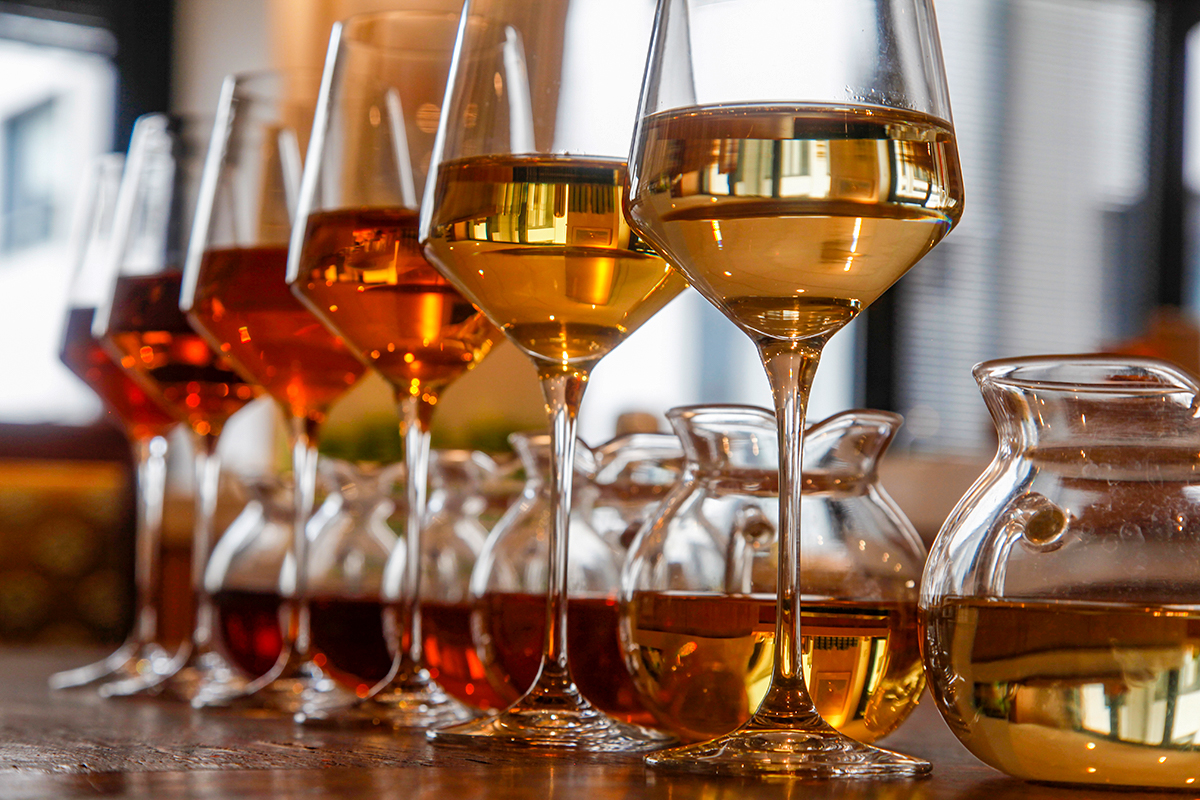Au Japon, la récolte la plus prestigieuse de l’année a lieu entre fin avril et début mai. C’est à ce moment-là que l’on manufacture les fameux ichibancha, ou thés de la première récolte. Au début du mois de juin a lieu la taille suivante. Elle donne des thés intéressants mais qui ne sont toutefois pas au niveau des précédents. Ici, dans les environs de Shizuoka, je participe à ma manière aux opérations, au volant d’une Kawasaki assez différente de celles que l’on peut voir circuler dans les rues de nos villes. Pour des raisons de coûts de main-d’œuvre, le Japon est l’un des rares pays au monde à avoir mécanisé ses opérations de cueillette.
From kettle to teapot
In Japan, the cast-iron kettle is one of the traditional objects used in the tea ceremony. This is the same kettle you’ll see in Japanese inns, over a hearth of embers. In winter, people sit by the hearth to warm their hands. As well as providing heat, the kettle holds the water used to make tea. The water is drawn from the kettle with a bamboo ladle and poured directly into the tea bowl, if it’s a powdered tea.
In a way, it was the French who invented the cast-iron teapot, back in the 1980s. Attracted by the graceful design of this vessel, they persuaded foundries in northern Japan to make much smaller versions, sometimes glazed, with a filter inside: thus the cast-iron teapot was born. For a long time, France was the main export market for this beautiful object that lasts a lifetime.
A very classy tea
In Britain, tea is a ritual, or rather, rituals. There is breakfast tea to start the day, and later on, the much-loved tradition of afternoon tea. The latter is more of a meal than a beverage: the tea itself is important, but even more so is the setting, the quality of the china, and the accompanying cucumber sandwiches, cakes and scones with jam and whipped cream. The Duchess of Bedford started this tradition at the beginning of the nineteenth century. In those days, people ate their lunch early and their evening meal late, and the Duchess grew hungry later in the day. She began to ask for food to be served with her cup of tea in the afternoon. This soon turned into a sophisticated social occasion, a tradition that lives on across the country. Afternoon tea at one of London’s prestigious addresses will satisfy even the biggest appetites in the most refined surroundings complemented by discreet service. It is a social ritual of etiquette. A very classy tea indeed.
Lucas the missionary
In the Argelès-Gazost region of the Pyrenees mountains in south-west France, Lucas is something of a missionary. With a degree in agricultural engineering in his pocket, he returned to his family’s land to start growing tea. After spending time with producers in Laos, Indonesia, China and Nepal, this pioneer now oversees a new estate of several thousand plants. He watches over them all attentively, observing how the different cultivars grow, and is already producing delicious teas which he brews in a Chinese gaiwan, allowing the leaves to reveal their full potential. Humble yet strong-willed and confident, Lucas wants to create a model of sustainable European tea cultivation that will set an example in agroecology. Here, he explains this to Sidonie, who is with me to record our podcast: Un Thé, Un Voyage.
Worthy withering
Withering is essential for the production of many teas. During this stage, the camellia leaf, which starts out being 80% water, gradually loses its moisture. French people often ask what the word fletrissage, for withering, means, as it is rarely used in our language. However, it appears in the most famous monologue in Corneille’s play, Le Cid, albeit in a different context, as Corneille is referring to withering laurel leaves. Moreover, far from adding value to the wreath on Don Diègue’s head, their withering signifies the loss of a proud appearance, a kind of dishonour.
But tea is not theatre. We have never heard anyone lament the withering of tea leaves and declaim: “O rage! O despair!”
Live free!
The gaiwan works as follows: after placing a large quantity of leaves in it, equivalent to around a third of its volume, the water is poured in. The first – short – infusion is poured into a “fairness cup” or directly into the drinking cups, and is followed by a second and then a third infusion.
The leaves are completely free during this series of brief infusions. Watch them unfurl. They are at home in water. Have you ever looked at tea leaves as they infuse? Have you ever seen them so relaxed? The gaiwan is not just a vessel for brewing tea, it’s a spectacle in itself. The object is beautiful, and the leaves inside are beautiful as they infuse. When we gently lift the lid, we can admire their colour, their shape, the way the water brings them back to life. And, of course, we can appreciate the aromas that emanate from them, which we can smell by lifting the inside of the lid to our nose.
The simplicity of the gaiwan
Apart from the tasting set, which is sometimes used by professionals, there are different ways of brewing tea. In China there is the zhong or gaiwan; in Japan the shiboridashi or kyusu. In the West, the most commonly used vessel is the teapot. But why not explore lesser known objects? Today, I would like to talk to you about the gaiwan. It’s a very simple thing, consisting of a kind of bowl with a lid. Let’s take a look at it from the outside while the tea is brewing inside. The beauty of the gaiwan lies in its radical simplicity. What is the principle of brewing tea? It involves bringing the tea leaves into contact with water. As the leaves unfurl, they release their aromas and other elements. I can’t think of a better place to brew tea leaves than in this remarkable object. I could show you the inside of the gaiwan right now, but I’d rather wait. What I enjoy most while my tea is brewing is appreciating the vessel in which it’s brewing: its colour, the way the changing light plays on its surface, its material. I observe the roughness of the clay and my contemplation transports me to distant landscapes. This gaiwan was made in the Périgord region of France by a talented ceramist, Manon Clouzeau. Let’s have another look at our tea brewing under this delicate lid, which is so easy to hold. I’ll leave you to look at it and will see you soon. Next week, I’ll take the lid off.
Pairing tea with savoury food
The French TV channel M6 came to see me this week to ask me about tea and food pairings; more specifically, savoury food. Tea is an ideal partner for something sweet like cakes or biscuits – think of that quintessential English tradition of afternoon tea. It’s a different matter, and perhaps more challenging, when it comes to savoury foods. My first recommendation for those who want to try it is to serve the tea at room temperature. With the right selection, tea can go well with, say, cured meats or cheeses, but it’s best to avoid pairing hot with cold. So here’s what you do. Take the tea of your choice, add the usual amount of tea leaves to a jug or carafe and pour over filtered water at room temperature, then leave it to brew for an hour. From left to right: Pu Erh Impérial (pair with a mature Comté), Bancha Hojicha (pair with a Brie), Shiraore Kuki Hojicha (pair with a Pont-l’évêque), Butterfly of Taiwan (pair with an Ossau-Iraty), Dharamsala Smoked (pair with a smoked cheese or cured meat), and Chine Long Jing (pair with a fresh goat’s cheese). Bon appétit!
Des accords salés
La chaîne de télé M6 est venue me voir cette semaine pour m’interroger à propos d’associations de thé et de mets. Et pas n’importe quelles associations ! Uniquement celles qui ont à voir avec du salé. En effet, marier le thé avec le sucré, y compris pour les néophytes, cela coule de source et ça s‘appelle par exemple le « tea time ». En revanche, avec le salé, c’est différent, disons plus osé, alors ma première recommandation est celle-ci, pour celles et ceux qui souhaitent se lancer dans de tels accords, il est souhaitable de privilégier une infusion à température ambiante. La raison en est que si charcuterie et thé ont des choses à se dire, si fromage et thé aussi à condition de bien choisir son cru, il n’est pas conseillé ici de confronter le chaud au froid. Pour votre infusion, voici comment procéder : vous prenez le thé de votre choix, vous mettez dans une carafe la quantité habituelle à savoir deux grammes par tasse, vous versez de l’eau filtrée et vous attendez une heure. De gauche à droite, Pu Erh Impérial (pour un Comté 36 mois), Bancha Hojicha (pour un brie), Shiraore Kuki Hojicha (pour un pont-l’évêque), Butterfly of Taiwan (pour un ossau-iraty), Dharamsala smoked (pour un fromage fumé, une charcuterie), Chine Long Jing (pour un chèvre frais). Bon appétit !
What’s the best model for Darjeeling?
Owners are complaining, workers are grumbling, buyers are gradually turning away because of repeated price hikes, and fake Darjeelings are flooding the market. If you love Darjeeling and its people, you can’t just stand by and watch.So what can be done? What bright future can we imagine for this town that likes to call itself the “Queen of the Hills”, for this prestigious tea that makes the dubious claim of being the “champagne of teas”?If we want the workers to stay on the plantations, they must be happy, otherwise their children will leave. So they need to be treated better, and their pay is one of the factors to consider. Looking to the future, the plantation owners need to be prepared to invest. This is happening less and less at the moment because the type of owner has changed, and many are looking for a quick return on investment rather than taking a long-term view. Lastly, we can’t accept that Darjeeling tea is being blended with other teas to reduce its cost price, or that the buyer is always the variable in the equation who has to adapt.
One solution could be fewer but better trained and better paid workers, and more mechanisation, providing it doesn’t affect quality, especially in the peak season. Another possible solution would be for the plantations to buy the leaves from the farmers, who would be given back the land. The farmers would be responsible for all harvesting activities and would negotiate the price of their freshly picked tea leaves with one of the factories. The plantations would concentrate on processing and marketing the leaves. If you’re as devoted to the Land of Thunder (dorje ling) as I am, if you dream of a bright future, these are possible solutions. Surely there are others.





